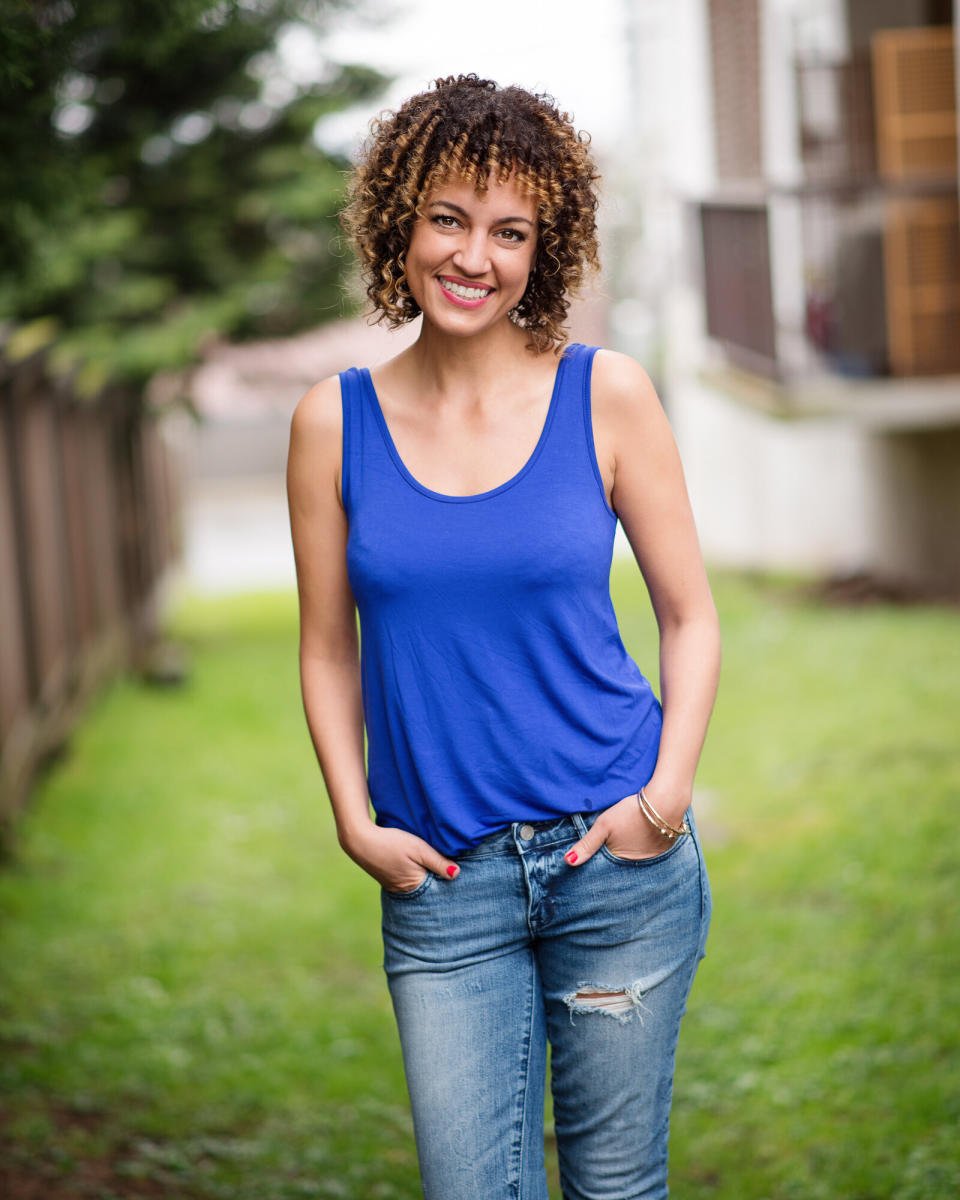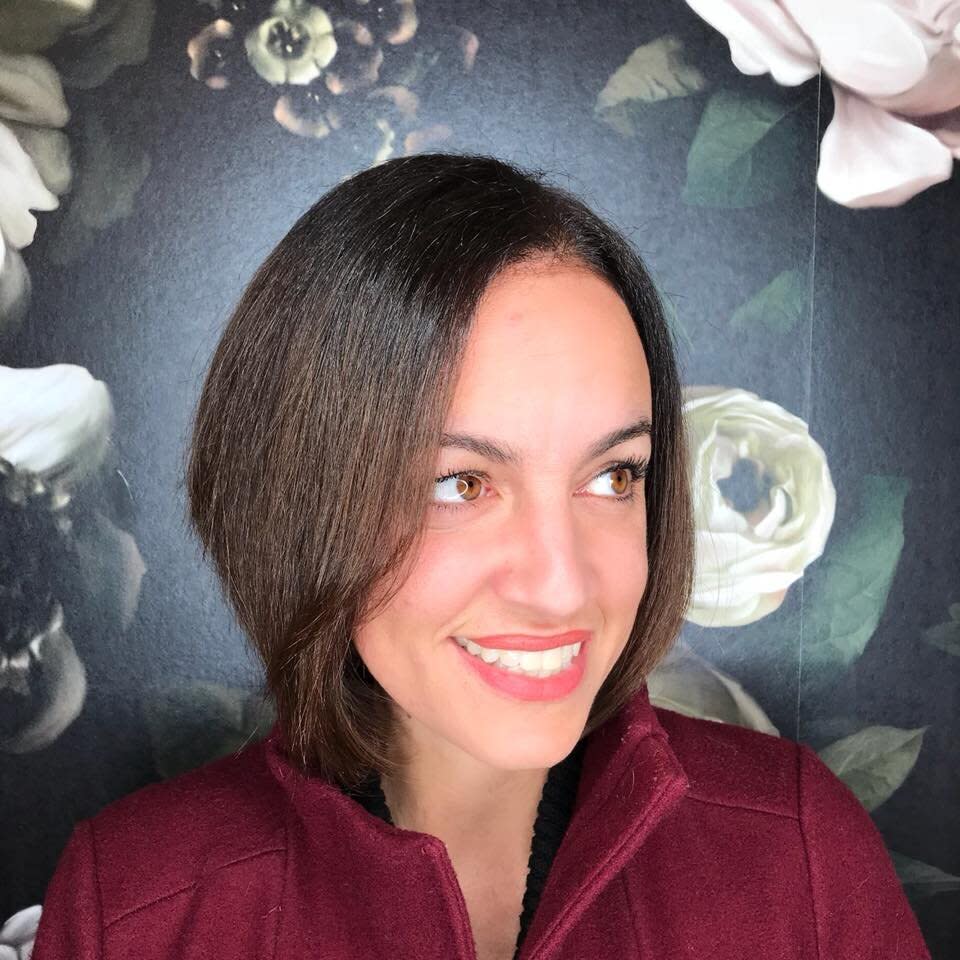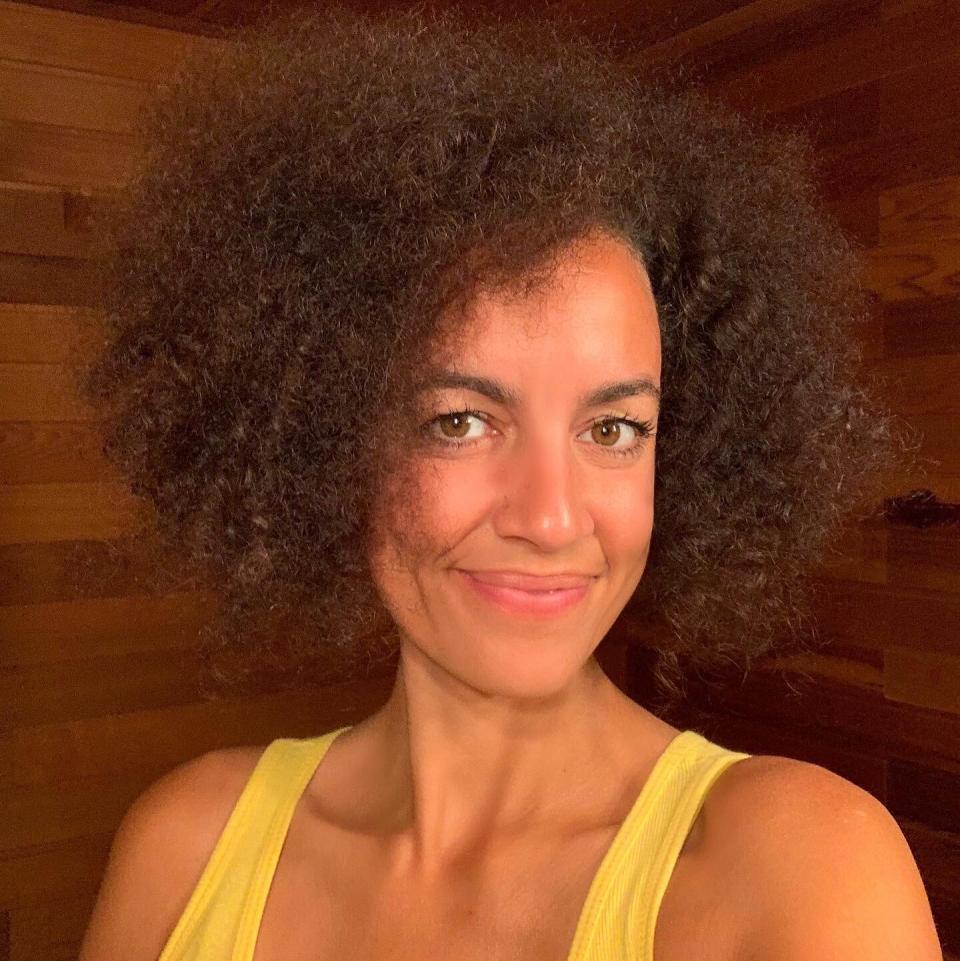I'm Mixed-Race And Have White Parents. Here's What My Hair Taught Me About My Culture.

Dangling upside down, I giggle as my mother swings me gently by my ankles. I can see my curls bouncing freely as she flips me right side up. She gives me a kiss as she scrunches and twists my curls into place with her fingers, and I fluff my hair to a finish with my own hands before running off to play.
As a 5-year-old mixed girl with a head full of kinky locks, this had become part of my morning hair routine. Thanks to my Caucasian mother (who learned how to style my hair through trial and error), we discovered that the best way to create manageable curls was to douse my hair in coconut creams, comb it out, and then flip me upside down to spring my coils into place.
There were no YouTube hair tutorials back then, and very few salons in our city knew how to manage uniquely textured hair like mine.
Like learning how to DIY my ’do, my parents were also on their own when it came to addressing my mixed makeup. As an adoptee, I didn’t know all of my nationalities, just that I was part Black and part Macedonian. This element of unknown made it difficult to keep me connected with my roots ― because I didn’t even know what those roots were.
As a transracial adoptee (a woman of color with white parents), I struggled to find my place in a world surrounded by people who didn’t look like me, and what made me stand out most was my hair.
I tried to tame my textured hair to blend in, and by doing so, I was also trying to hide my cultural identity, afraid of the questions that would arise around the origin of my curls and darker skin ― many of those answers unknown.
Through my hair journey from childhood to adulthood, I was able to shift from culturally curious, to culturally confident, recognizing and appreciating my diverse background as a woman of mixed race, and how it impacts the person that I am today.
During my early childhood years I was blissfully unaware that I was different. I wore my hair big, and grew up with a colorblind frame of mind. I moved through life believing that while people looked different, they were to be treated equally. One day on the playground at school, a classmate threw rocks at me and called me “Blackie.” At first, I didn’t understand why. It wasn’t until my mother explained racism to me that my eyes were opened to the discrimination that exists, a reality that would repeat throughout my life. At that moment, I saw myself in a different light, and as a result, it changed my comfort level with my hair.
As I neared the end of elementary school, I begged my parents to let me get a perm. Everyone else was doing it, and I didn’t understand why I couldn’t do the same. Crimping my hair didn’t work, so I aimed for the spiral perm look that my friends donned. After hundreds of dollars, though, my curls ended up looking the same. I was stuck with hair that I hated, and it left me feeling isolated and out of place.
Throughout my teen years, I tried to fit in so I wouldn’t stand out. Every day I tied my hair back in a slick bun. No one knew what my natural hair looked like, and while my friends begged me to wear my hair big, I spent many nights dreaming of having a head full of long, beachy waves like the models in the media.
I was encouraged to experiment with my hair, and I did, wearing it in box braids, coloring it, and cutting it super short. Nothing seemed to satisfy. I wasn’t comfortable in my own skin, and didn’t feel connected with my culture. I didn’t feel “Black enough” to keep up with African hairstyles, but I also didn’t feel “white enough” to mimic the hairstyles of my straight-haired friends.
As a young adult, I continued to hide behind my slicked-back hair, and eventually turned to chemical straightening in an attempt to achieve the look that I so desired. Naturally textured hair was seen as messy and unkempt ― a fact that quickly became apparent on TV, too.

Again and again I saw powerful Black women conforming to Caucasian hair standards on the small screen. Women like Olivia Pope (Kerry Washington) in ”Scandal,” Annalise Keating (Viola Davis) from ”How To Get Away With Murder,” and Tyne Patterson (CCH Pounder) from ”Sons of Anarchy” wore wigs and weaves when in positions of power, only donning their natural hair when they had gone crazy, been kidnapped, or taken a turn for the worst. Afros, braids and bouncy curls weren’t seen in a professional office environment.
When I treated myself to a DNA test in my early 30s, I was excited to discover my genetic background. Finally, I was able to proudly share the makeup of my mix ― Nigerian, Irish and Macedonian. Because of my hair and my cinnamon-colored skin, people always asked me about my Black roots, and now I could share with confidence. Feeling encouraged, I cut my straightened hair and began growing out my natural curls.
When I became a mother, I realized just how important it would be for me to (literally) show my roots. My youngest of three children was born with a head full of curls just like mine.
One day, when I came home from the salon with a silky-smooth blowout, she twirled her curls, scrunched her nose, and asked if she could have “beautiful” hair like mine. She explained that she didn’t like her poofy hair because it made her look different, and I completely understood.
Instead of straightening her hair to help her fit in, I vowed to wear my hair big and curly, and to teach my children about our background and our culture. I wanted to be a role model for them, and letting my hair down was the first step.

This year, with the Black Lives Matter movement in the spotlight, I made the conscious decision to stop sitting in silence and start speaking up. A book called ”Don’t Touch My Hair,” written by a fellow mixed woman of Irish-Nigerian descent, deepened my understanding of slavery, cultural appropriation, decolonization and oppression, as it was all shared through the parallels of African hair culture, and it left me wanting to learn more.
Today, I continue to educate myself on my Nigerian ancestors (and those from my other cultures as well), and I am trying to connect with more people who come from similar backgrounds. As a result, I’m feeling more comfortable in my own skin ― and in my natural hair. Through learning about my roots I feel freer to show my roots (literally), and I hope by doing so, my kids will feel encouraged to do the same.

You can follow Bianca on Instagram @bitsofbee or at her website bitsofbee.com.
Do you have a compelling personal story you’d like to see published on HuffPost? Find out what we’re looking for here and send us a pitch!
Love HuffPost? Become a founding member of HuffPost Plus today.
This article originally appeared on HuffPost and has been updated.


